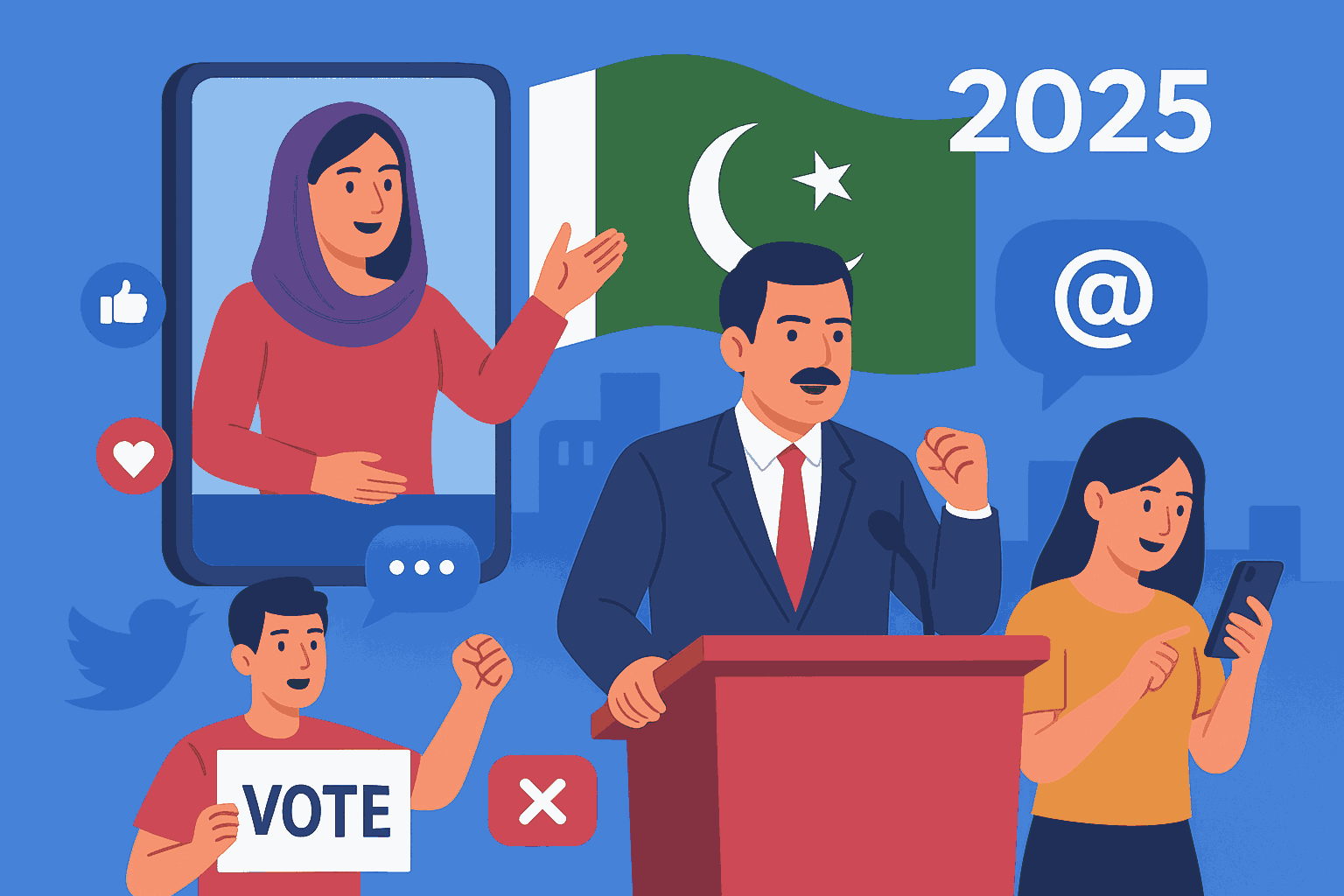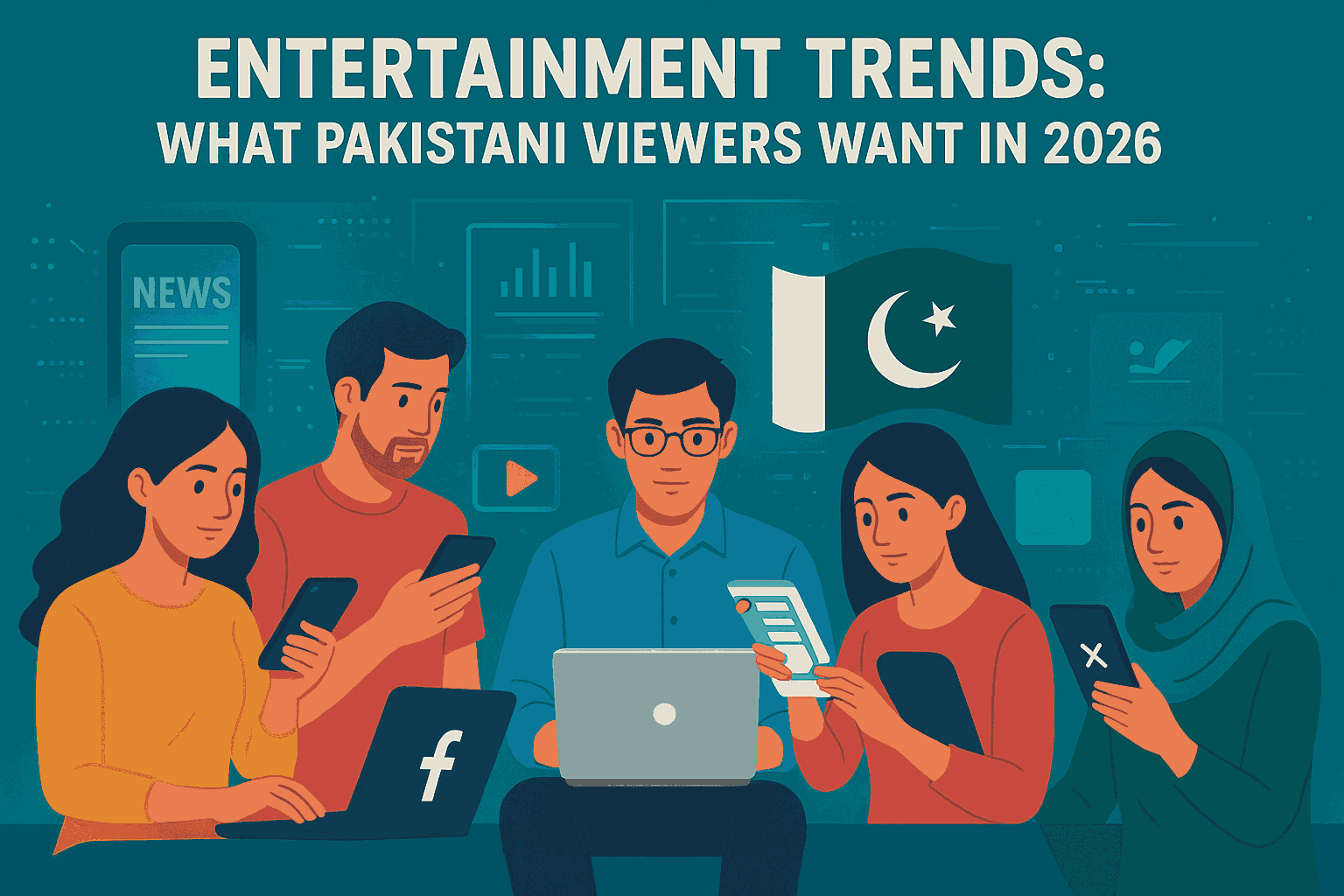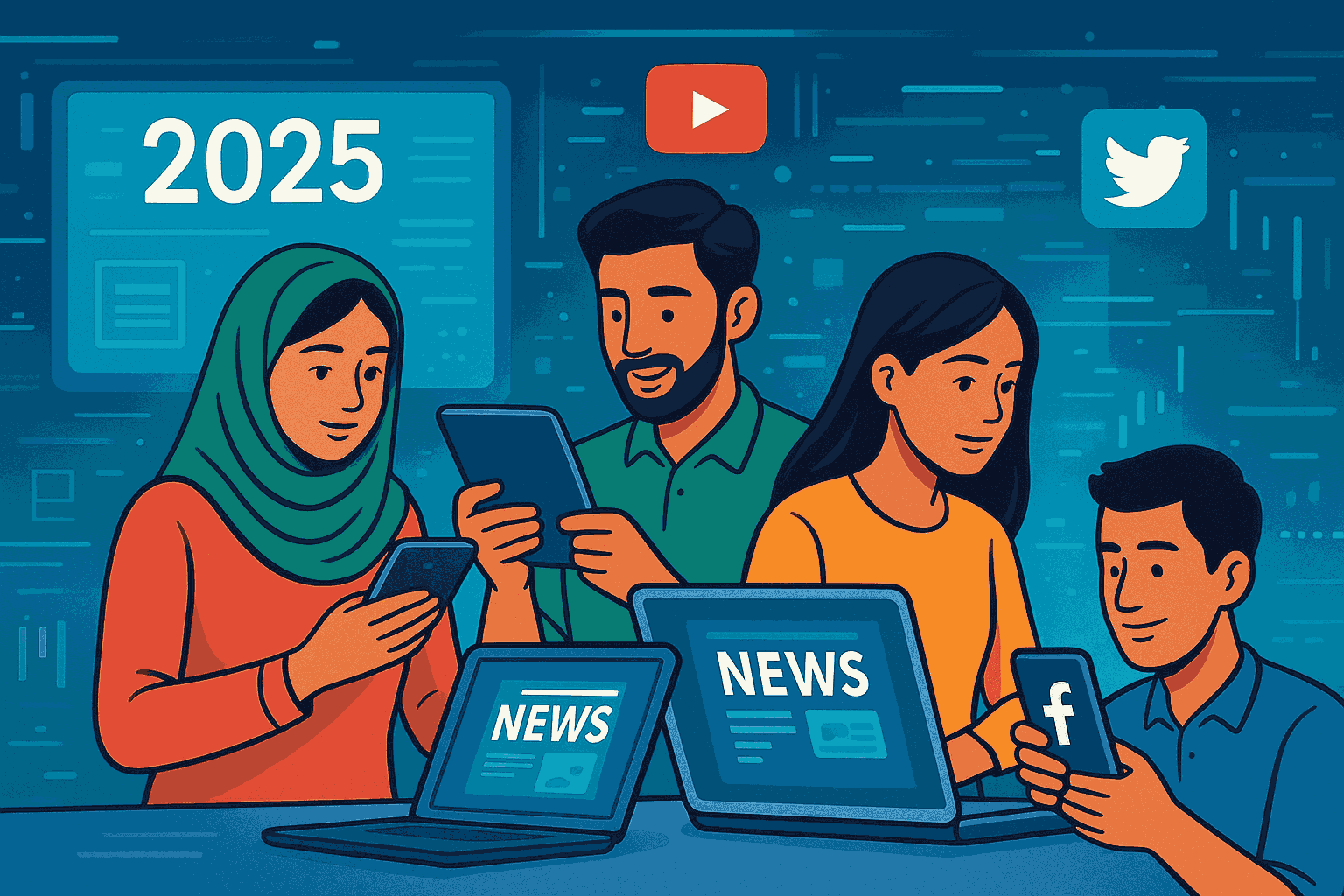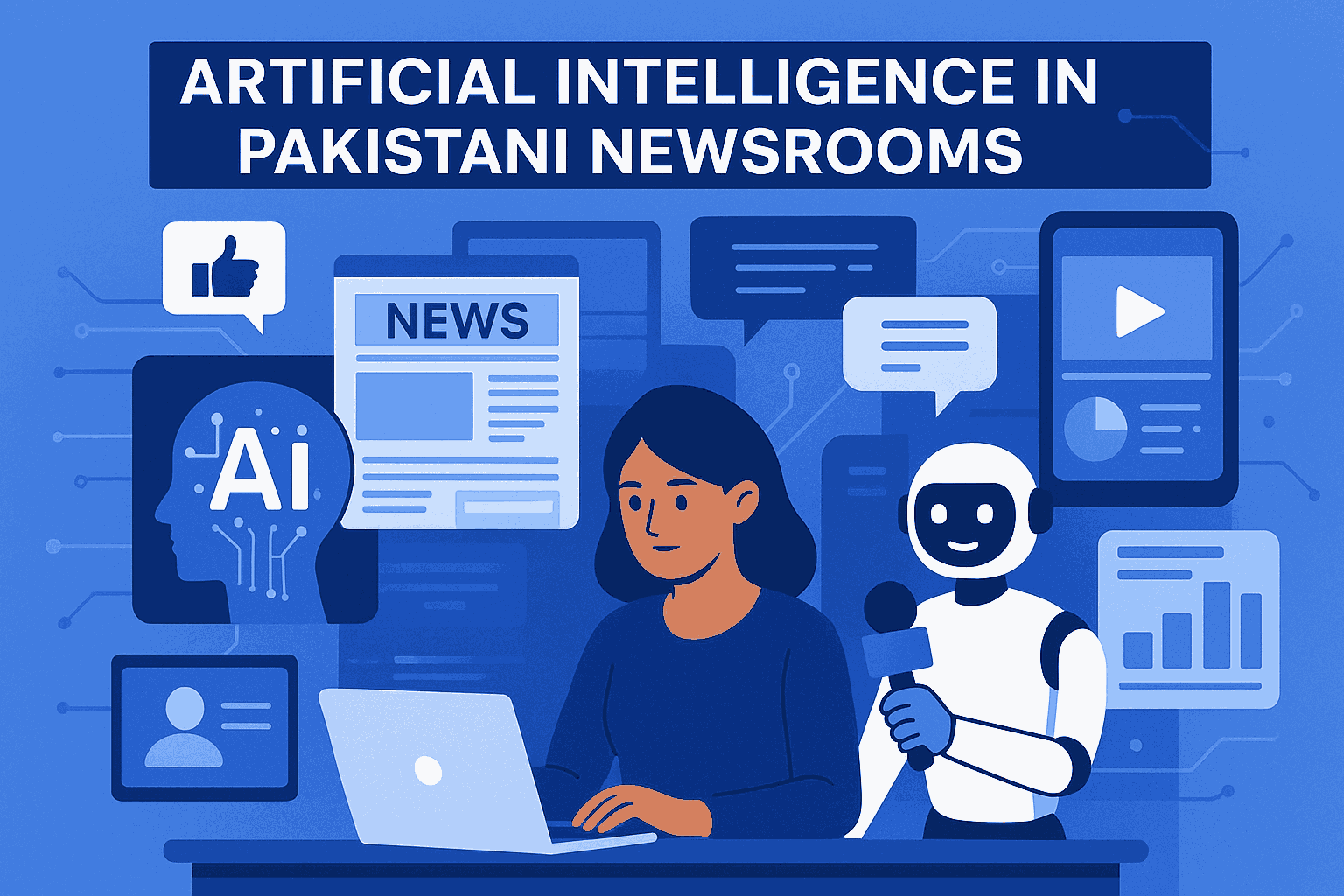The Impact of Social Media on Political Campaigns in Pakistan: A 2025 Outlook
By Sana KhalilPublished On 06 Oct 2025

In the fast-paced digital age, social media has become a powerful tool shaping political landscapes across the world. In Pakistan, where nearly half the population is now connected to the internet, platforms like Facebook, X (formerly Twitter), Instagram, TikTok, and YouTube have redefined how political messages are delivered and consumed.
As the country moves toward the next phase of political evolution, social media is not just a communication channel—it’s a battlefield for influence, credibility, and voter engagement. This article explores how social media is transforming political campaigns in Pakistan, the strategies used by political parties, and what the future holds in 2025 and beyond.
The Rise of Digital Politics in Pakistan
Over the last decade, Pakistan has witnessed an unprecedented surge in social media users. With over 87 million active internet users and more than 45 million Facebook accounts, digital platforms have become the heartbeat of modern political discourse.
Traditional rallies and televised speeches are still part of the culture, but their impact is increasingly complemented—or even overshadowed—by online activity. Political leaders now communicate directly with voters through live videos, tweets, reels, and online polls.
The digital shift first gained momentum during the 2013 general elections, where online campaigning was introduced as a supplementary tool. By the 2018 elections, social media had evolved into a decisive factor, influencing narratives, shaping perceptions, and even determining voter turnout.
In 2025, it’s clear that no political campaign can succeed without a well-planned digital strategy.
Social Media as the New Political Arena
Social media offers something traditional media cannot: direct interaction and instant feedback.
Political parties in Pakistan use these platforms to:
- Promote their agendas and manifestos.
- Counter misinformation and respond to controversies in real time.
- Engage directly with citizens through live Q&A sessions.
- Measure public sentiment using analytics and data insights.
Platforms like Facebook Live, YouTube, and TikTok have particularly gained traction among younger voters. Politicians are now embracing short-form videos and memes to make complex political issues more digestible for digital audiences.
Moreover, platforms like X (Twitter) remain the go-to space for journalists, analysts, and politicians to break news and set trends. A single tweet can dominate news headlines, shape narratives, and even impact decision-making within hours.
The Power of Digital Storytelling
Political success on social media depends on effective storytelling. Voters are no longer swayed by long speeches or press conferences—they respond to authenticity, relatability, and visuals.
For example:
- Video storytelling showcasing development projects, personal struggles, or behind-the-scenes moments humanizes politicians.
- Infographics and data visuals make policies easier to understand.
- Interactive polls and hashtags foster public participation and engagement.
Digital storytelling allows politicians to craft emotional connections with their audiences, appealing to identity, belonging, and hope—three of the most powerful motivators in politics.
Influencers and Micro-Targeting: The New Campaign Tools
In 2025, political campaigns in Pakistan are using sophisticated micro-targeting and influencer collaborations to reach specific demographics.
Influencers in Political Messaging
Social media influencers, vloggers, and content creators play an increasingly vital role in shaping opinions, particularly among urban youth. Many influencers now partner (officially or unofficially) with political parties to amplify messages that align with their audience’s values.
These influencers are seen as more authentic and relatable than traditional politicians, giving campaigns a modern, human touch.
Micro-Targeted Ads
Political organizations also use data-driven ads to deliver tailored messages to voters based on age, location, and interests. For instance, a voter in Lahore may see content emphasizing urban development, while someone in Balochistan might encounter videos focused on infrastructure or job creation.
This precision marketing has turned social media into a highly personalized political experience.
The Dark Side: Fake News and Digital Manipulation
While social media has democratized information, it has also opened the door to misinformation and propaganda.
Fake news spreads faster online than official statements, and political campaigns sometimes exploit this by creating misleading narratives or deepfake content. During election seasons, social media feeds often flood with unverified videos, edited photos, and fabricated statements—all designed to manipulate public sentiment.
This growing problem has forced authorities, platforms, and fact-checkers to work together on digital literacy campaigns and verification systems. However, misinformation remains a major challenge in Pakistan’s online political ecosystem.
Youth Engagement and Political Awareness
One of the most significant outcomes of social media’s influence is the rise in youth political participation.
Nearly 65% of Pakistan’s population is under the age of 30, and this demographic is highly active online. Unlike older generations, younger voters get most of their information from digital sources rather than television or print media.
Hashtags, memes, and viral challenges have become tools for raising awareness about issues like education, corruption, and unemployment. This trend has made politics more accessible and interactive, encouraging young citizens to debate, discuss, and vote.
Political parties have taken note—adapting their messages, tone, and visuals to appeal to the younger, tech-savvy electorate.
Gender and Representation in Online Campaigns
Social media has also given women and marginalized voices a stronger platform in Pakistan’s political conversation. Female politicians, journalists, and activists now use Twitter Spaces, YouTube channels, and podcasts to engage directly with audiences without the constraints of traditional media.
This shift is helping redefine gender roles in politics by allowing women to challenge stereotypes, share experiences, and highlight social issues that often receive little coverage in mainstream outlets.
However, online harassment remains a serious issue. Many female public figures face coordinated trolling and abuse campaigns, highlighting the urgent need for stronger cyber laws and platform moderation.
Regulation and the Future of Digital Campaigning
As social media continues to shape public opinion, Pakistan’s Election Commission and related institutions are paying closer attention to digital campaigning practices.
New policies are being discussed to regulate:
- Political advertising budgets on digital platforms.
- The spread of fake news and hate speech.
- Transparency of sponsored posts and influencer collaborations.
While regulation aims to ensure fair elections, it must balance between freedom of speech and responsible communication to preserve democratic values.
The Future: What Lies Ahead in 2025 and Beyond
By 2025, political campaigning in Pakistan will likely become fully hybrid—combining physical rallies with virtual events, AI-powered analytics, and even metaverse-like immersive experiences.
Emerging technologies such as Artificial Intelligence (AI), Augmented Reality (AR), and Blockchain will further transform how politicians engage with the public.
- AI chatbots could assist voters by answering election-related questions.
- AR filters might allow voters to experience virtual tours of development projects.
- Blockchain can ensure transparency in campaign donations and data handling.
The digital frontier of politics is expanding rapidly, and the parties that adapt quickest will hold the upper hand in shaping Pakistan’s political future.
Conclusion
Social media has revolutionized political campaigning in Pakistan, turning it into a 24/7 digital conversation between leaders and citizens. While it empowers people with information and connectivity, it also presents new risks in the form of misinformation and online polarization.
As Pakistan heads deeper into the digital era, the success of future campaigns will depend on transparency, authenticity, and adaptability. The political leaders who harness technology ethically—and connect with the digital generation through honesty and innovation—will define the country’s democratic narrative in the years to come.


